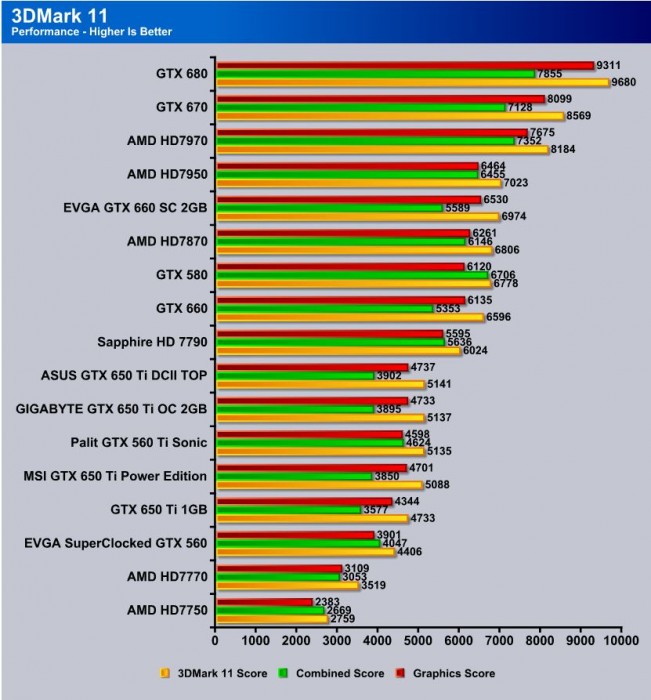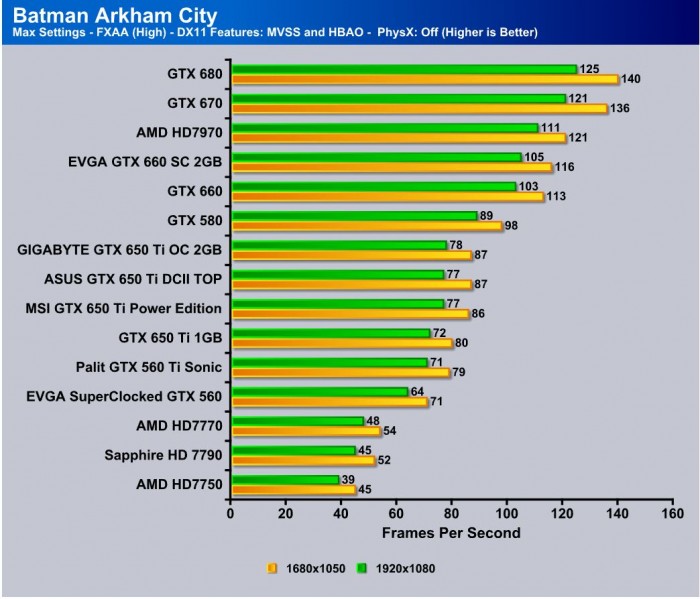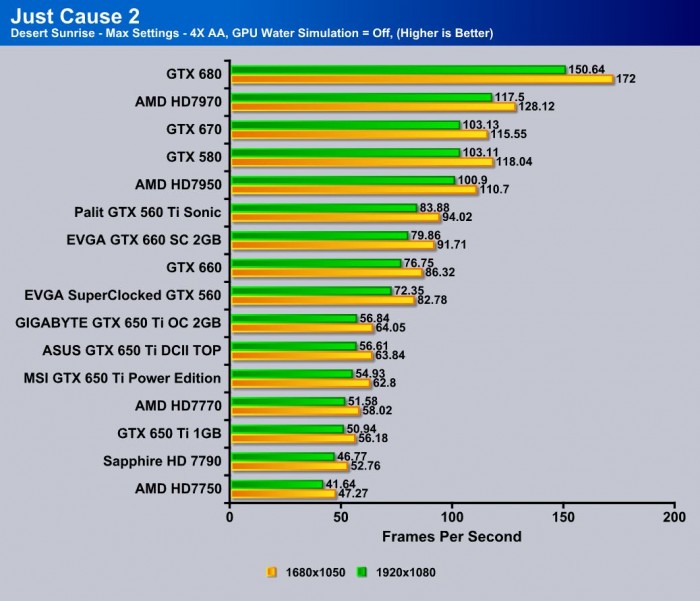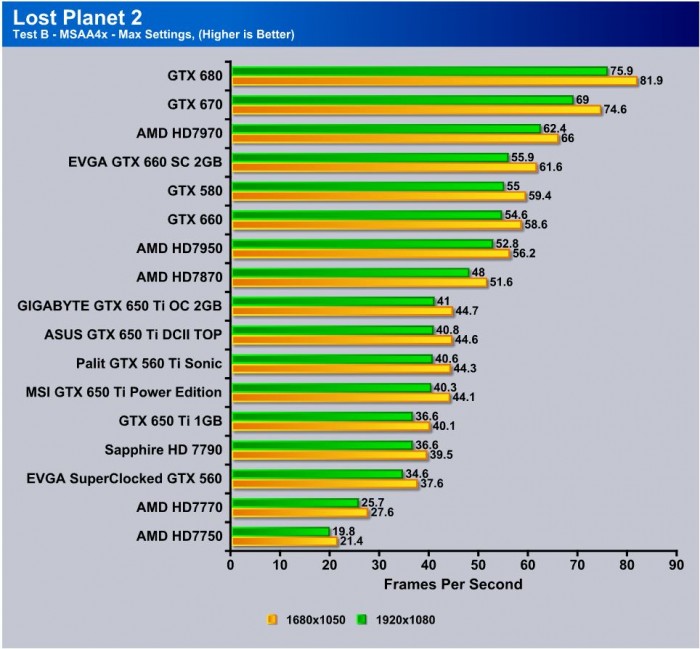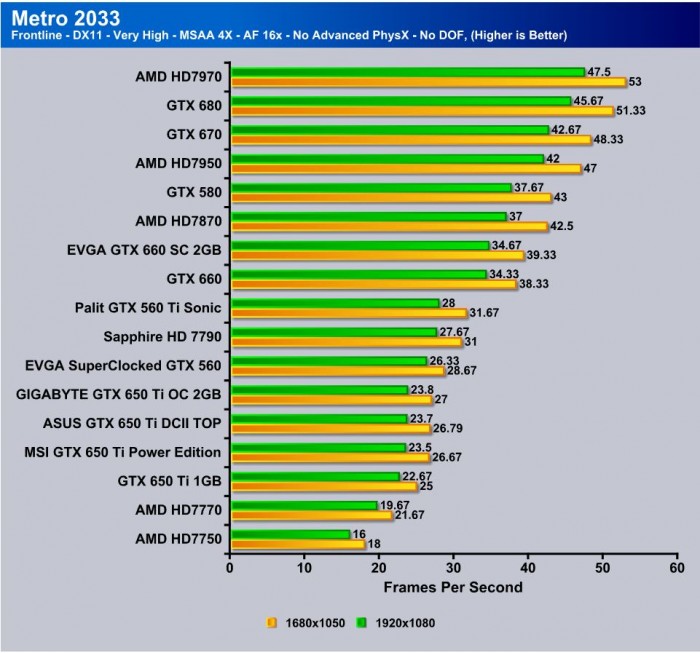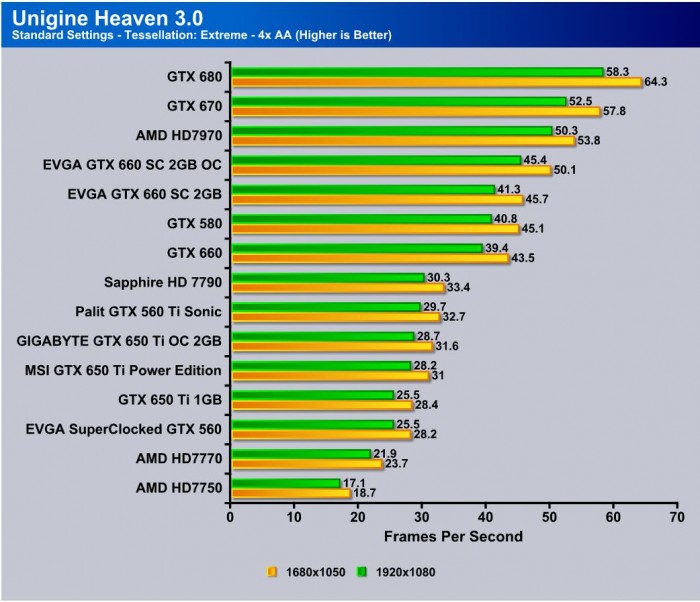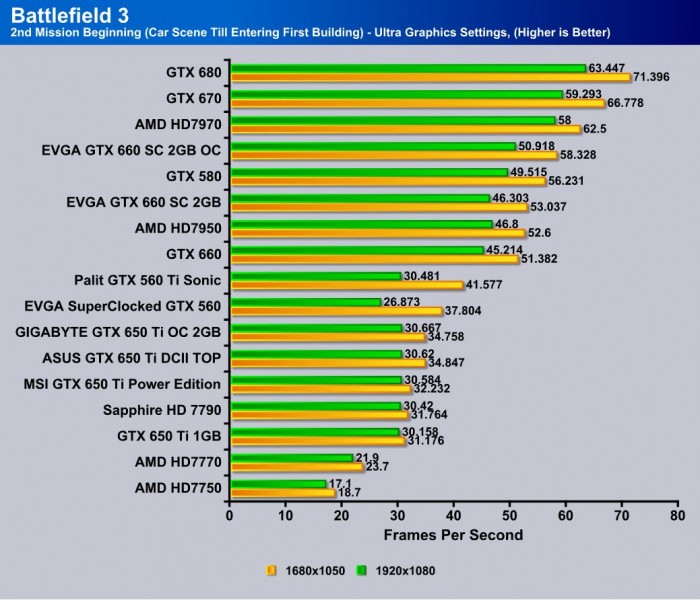Sapphire HD 7790 1GB Graphics Card – Filling the Gap in Mainstream Performance
Testing & Methodology

We’ve expanded our testing suite considerably since the X79 chipset release, and will continue to use the same methods for most of the motherboards and CPU’s we test. In the interests of thoroughness and accurate results, we run each test at least three times, and some tests more than that. We average the total of all the tests from each benchmark then report the average here.
The OS we use is Windows 7 Pro 64bit with all patches and updates applied. We also use the latest drivers available for the motherboard and any devices attached to the computer. We do not disable background tasks or tweak the OS or system in any way. We turn off drive indexing and daily defragging. We also turn off Prefetch and Superfetch. This is not an attempt to produce bigger benchmark numbers. Drive indexing and defragging can interfere with testing and produce confusing numbers. If a test were to be run while a drive was being indexed or defragged, and then the same test was later run when these processes were off, the two results would be contradictory and erroneous. As we cannot control when defragging and indexing occur precisely enough to guarantee that they won’t interfere with testing, we opt to disable the features entirely.
Prefetch tries to predict what users will load the next time they boot the machine by caching the relevant files and storing them for later use. We want to learn how the program runs without any of the files being cached, and we disable it so that each test run we do not have to clear Prefetch to get accurate numbers. Lastly we disable Superfetch. Superfetch loads often-used programs into the memory. It is one of the reasons that Windows occupies so much memory. Vista fills the memory in an attempt to predict what users will load. Having one test run with files cached, and another test run with the files un-cached would result in inaccurate numbers. Again, since we can’t control its timings so precisely, it we turn it off. Because these four features can potentially interfere with benchmarking, and and are out of our control, we disable them. We do not disable anything else.
We are revamping our testing method in order to better represent motherboard performance and offering to the consumer. Also we want to make it an easier read for you without miles of endless charts. We ask that you provide feedback in an effort to help us deliver better reviews for you.
Test Rig
| Test Rig | |
| Case | Open Air Test Bench |
| CPU | Intel Core i7-3770K |
| Motherboard | ASUS Maximus V Formula |
| Ram | 16GB Patriot Viper Xtreme 2400MHz + |
| CPU Cooler | Swiftech H20-320 Edge |
| Hard Drive | Western Digital Velociraptor 300GB |
| SSD | Intel 510 series SATA III 120GB |
| Optical | ASUS BD-ROM |
| GPU | Sapphire HD7790 |
| Additional Cards |
N/A |
| PSU | Thermaltake Toughpower XT 1475W |
| Mouse | Tt eSPORTS Theron gaming mouse |
| Keyboard | Tt eSPORTS Meka G1 mechanical gaming keyboard |
Test Suite
We will use the following applications to test the performance of the graphics card.
Synthetic Benchmarks & Games
| Benchmarks |
|---|
| 3DMark11 |
| Batman Arkham City |
| Just Cause 2 |
| Lost Planet 2 |
| Metro 2033 |
| Heaven Benchmark |
| Battlefield 3 |
Overclocking

The Sapphire Hd7790 Card comes out of the box overclocked and upon trying to overclock it via AMD Overdrive I quickly found taht the limit of Overdroive is reached much before the card. The Overdrive utility maxes out at 1600MHz (6400MHz) memory which means out of the box the cars memory is maxed, and the GPU maxes at 1200 but the GPU hits that without even a thought. I really hope some software with higher limits is available soon as the Overdrive limits really does not let this card stretch it legs properly and I think this card really leaves alot on the table due to the clock limit.
The HD7790 clocked to the Overdrive cieling will net you between 4-7% increases in performance which could be enough for a couple FPS, and since it gets there so easy I see no reason why anybody wouldnt crank it up as even the thermals were not really increased at all under the overclocked load. (60C Load stock and 63C Load Overclocked)
In order to ensure no system bottleneck we clocked the CPU to 4.6GHz to ensure there is no reason the system will slow down the card’s performance at all.
Some may ask why we chose the mainstream Z77 system, and we can explain. Up until recent the X79 enthusiasts platform did not really support PCI-E Gen 3 on the Nvidia 600 series GPU’s. Because of the inherent instability many have seen with the X79 platform with Gen 3 products, Nvidia has been hesitant to enable it, and now there is a workaround via registry to get it working. However, in order to ensure the most consistent testing possible, we have stuck to the natively supported Z77 platform.
Important note: Overclocking can cause component failure. Please exercise caution when attempting any level of overclock on system components.
Temperatures

The temperatures were recorded with full loaded Heaven benchmark looping for over 30 minutes or longer depending how long it took for the card to level out in temps and sat at a plateau for more than 10 minutes.
| GPU Temperatures | Temperature (Idle/Load) |
| HD7790 OC | 29C/63C |
| HD7790 | 29C/60C |
The cooler as I expected on this card was more than enough to keep the GPU nice and chilly as even at max clock it barely hit 63C which means shoudl a higher limit overclock program become available I am betting this card could have alot more headroom waiting to be exploited.
Real world/Gaming Benchmarks
3DMARK 11

3DMark 11 is the newest in Futuremark’s suite of benchmarking utilities. Its a fully capable DirectX11 benchmark which also stresses and analyzes the system performance as a whole to simulate a heavy rendering environment such as a high end game or other app the end user may run. This benchmark was run with Performance settings 5 times and all runs were averaged for the result below.
Here you can see tthe HD7790 climbs over the GTX 650 Ti 2GB card in both the Performance and Extreme tests which tells me taht the GPU simply is powerful enough to push it to a nice spot and the 1GB framebuffer is not as much of a limit as we may think at this level.
Batman Arkham City
Batman Arkham city is one of those games that is just downright fun, and also it is nice as it gives very repeatable results for a game test. PhysX is disabled to level the playing field due to the fact that it would load the GPU on Nvidia based cards more to add the pretty effects which could hinder framerates giving AMD an advantage.
Here I was a bit surprised to see the 7790 fall below the 7770, but being this is a launch driver it is possible that it simply is not completely optimized especially for a game such as this which is actually an Nvidia “Way its meant to be played” title. So with taht it does stand to reason that NV will get a nice bump here.
Just Cause 2
Just Cause 2 has been in my stable of games for awhile, and is quite graphics intensive so I try to bring it out as it is a fun all around game and allows a nice test of a cards capabilities.
Here again i find the 7790 below the HD7770, and I found this odd enough that I re ran the tests another 3 passes just to confirm. The numbers dont lie so I must assume that it is possible there may be more time needed to get these drivers for the new GPU tweaked to optimum performance.
Lost Planet 2
Lost planet 2 even for being a bit older tends to offer a very good load even keeping top end GPU’s capped at a little over 60 FPS so it is definitely a good tool to put the hurt on a more mainstream value card.
Here with Lost Planet 2 I amd seeing a more favorable result as it jumps above the HD7770 by a decent margin but still the Nvidia cards eek by with less than half a FPS separating it.
Metro 2033

Metro 2033 likely one of the most demanding games that we have tested with, as it brings virtually every GPU to its knees. Here to my surprise I see the HD 7790 jump quite ahead of the 650 Ti models even the ones with 2GB Framebuffer and for such a stressful game, it definitely got my attention.
Heaven Benchmark
Unigine Heaven is a very popular benchmark, but due to the fact I am still working on validating the repeatability of scores on the new 4.0 version I decided to stick with the 3.0 version for this test.
Here the HD7790 definitely once again pulls a nice result well ahead of the other mainstrweam models but still a decent step behind the GTX 660.
Battlefield 3
Battlefield 3 is probably one of the most popular FPS titles, and with its range of graphics capabilities definitely a fitting test as it also is played by a alrge part of the PC Gaming crowd.
The HD7790 does quite well here as well with Ultra settings which is no joke for this game, and it pulls a eather respectable 30 FPS average. This would be quite choppy at it lwoer points so a medium/high combo of settings would likely put you in a good playable framerate at 1080p HD resolution but the 1GB framebuffer could also be botlling up the performance as well. This is one of those moments where I wish I had this same card with 2GB Framebuffer just to test.
 Bjorn3D.com Bjorn3d.com – Satisfying Your Daily Tech Cravings Since 1996
Bjorn3D.com Bjorn3d.com – Satisfying Your Daily Tech Cravings Since 1996
